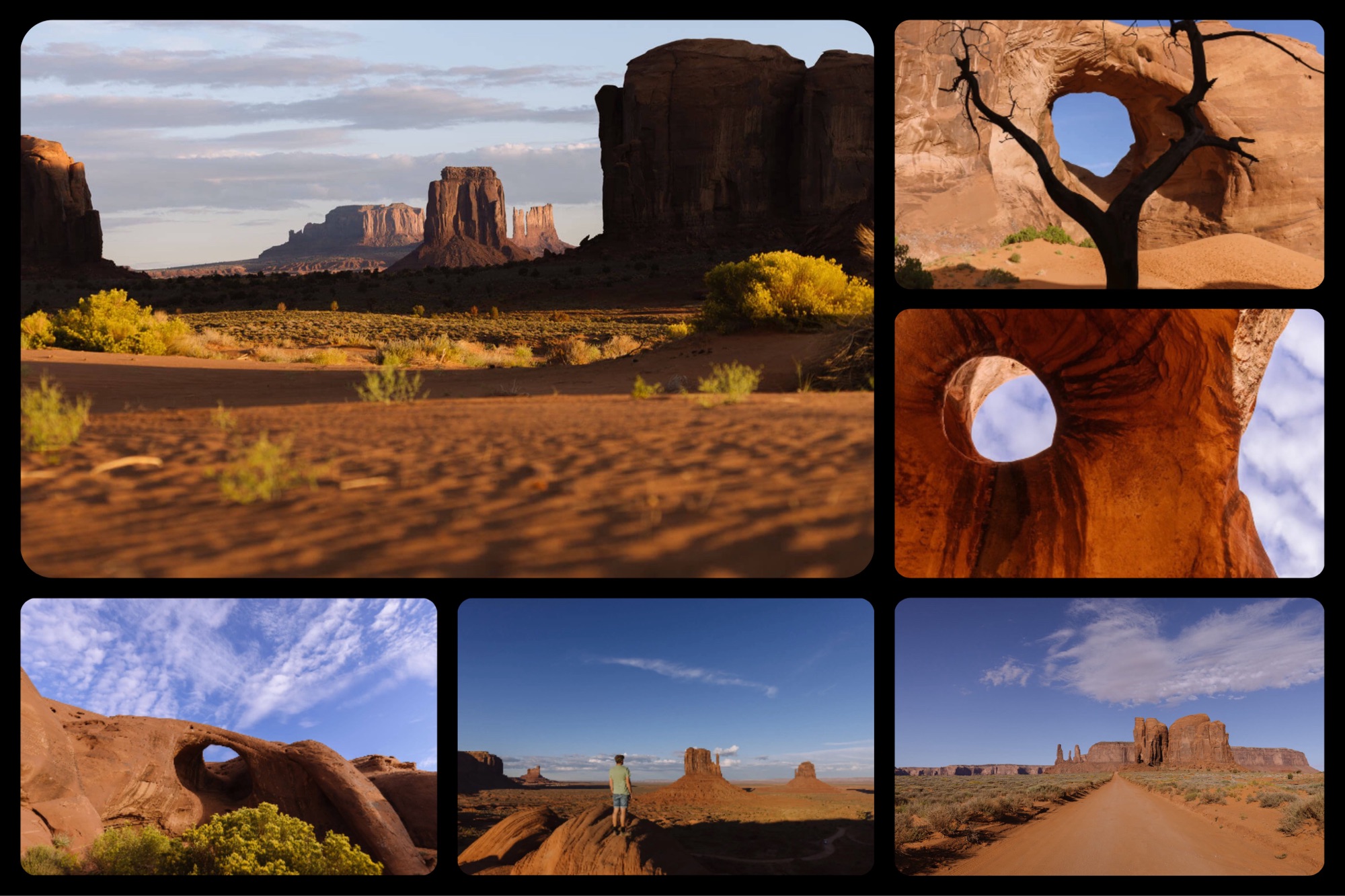Explore the Iconic Monument Valley: A Comprehensive Guide to this Picturesque Landscape, Abundant in Navajo Culture and Breathtaking Scenery.
Monument Valley, situated on the Arizona-Utah border, is renowned for its towering sandstone formations in a captivating red sand desert. This ancient and rugged terrain, sculpted into magnificent designs by the forces of erosion and uplift, has its first inhabitants as the Navajo Tribe. Presently, they serve as the custodians of these lands, offering a distinctive experience for travelers. As you catch your initial glimpse of the iconic shapes of Monument Valley, it becomes evident why filmmakers are entranced by this land of sandstone masterpieces rising from a crimson horizon.
Beyond the enchanting buttes and mesmerizing mesas, Monument Valley offers a plethora of rewarding activities. Our guide to visiting this unique destination covers the must-see sights, the finest tours, and what to explore around this special place.
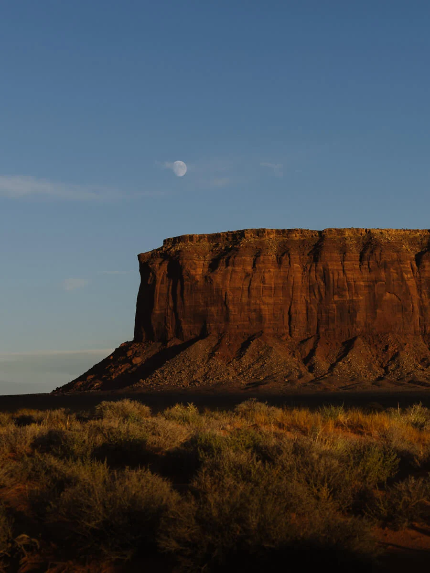
What’s Monument Valley?
Monument Valley, situated on the Arizona-Utah border in the United States, is a stunning location characterized by prominent red sandstone formations that rise majestically in the flat, arid desert.
The region holds profound significance for the Navajo people, who have called these lands home for centuries. Its awe-inspiring landscapes have ignited the creativity of artists, photographers, and filmmakers, turning it into one of the most iconic and recognizable places globally.
The Geological Formation of Monument Valley
The unique topography of Monument Valley stems from millions of years of erosion acting on a stratum of iron-rich sedimentary rock. Over time, water and wind have sculpted away the softer rock layers, giving rise to the striking buttes, mesas, and spires visible today.
- Mesas: Representing the initial erosion stage, a mesa takes on the appearance of a flat-topped table in the rock formation.
- Butte: Progressing to the second level of erosion, a butte manifests as a solitary hill, smaller than a mesa, frequently featuring vertical sides and a flat summit.
- Spire: Marking the ultimate stage of erosion, a spire emerges as a slender, independent column of rock.
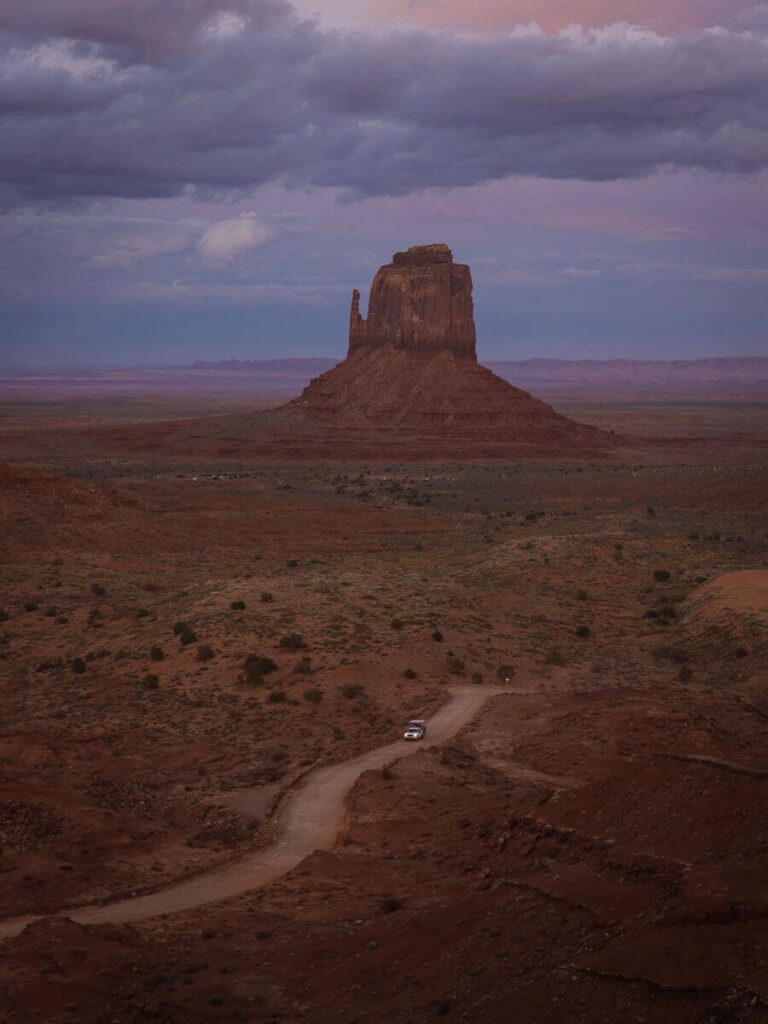
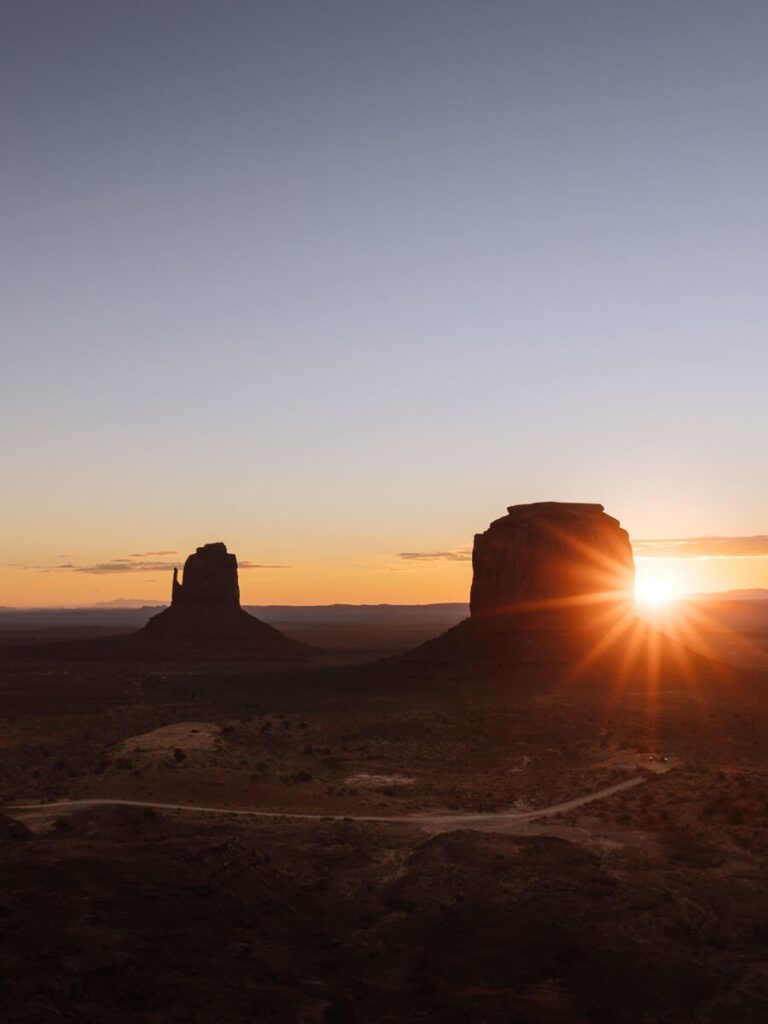
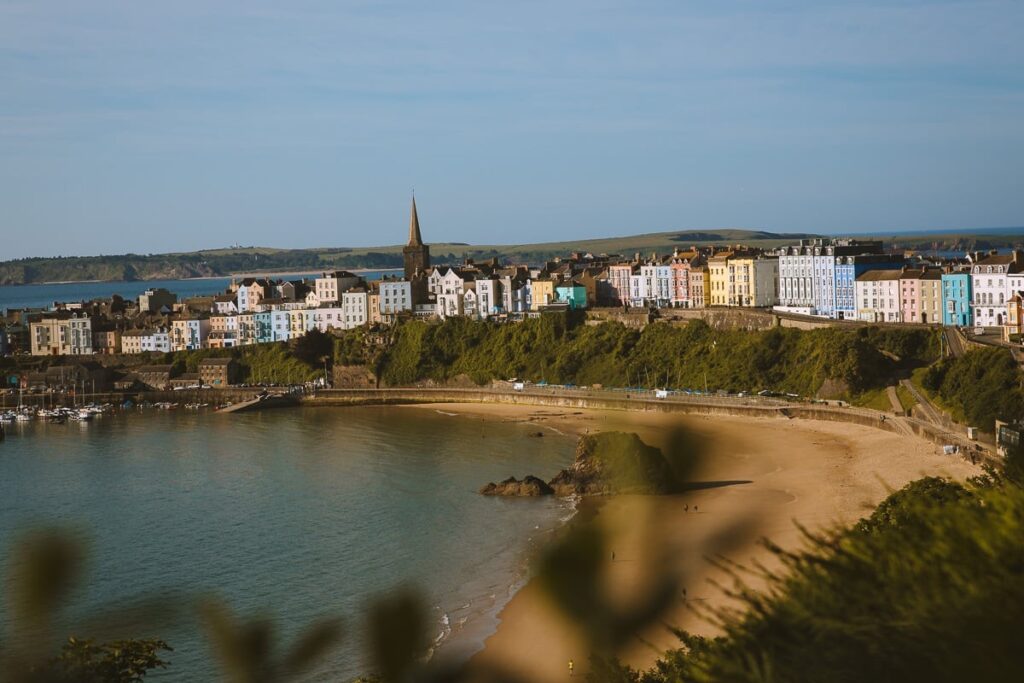
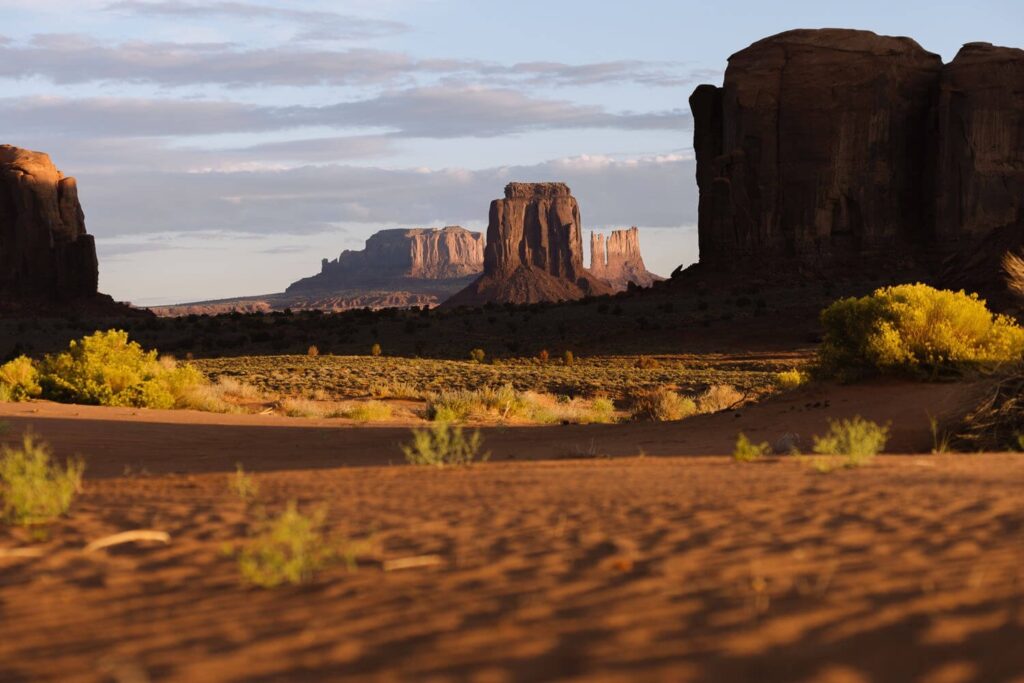
Navajo Tribal Park in Monument Valley
Found within the Navajo Nation Reservation, Monument Valley, sometimes called Oljato-Monument Valley, is a distinctive location.
In 1939, as its renown started to ascend, the Navajo people allocated 92,000 acres of land to establish the Monument Valley Navajo Tribal Park. Serving as the core of Monument Valley, the park encompasses the majority of the iconic mesas, buttes, and spires.
MOVIES SET IN MONUMENT VALLEY
Monument Valley gained prominence as the backdrop for Western classics like John Wayne’s “Stagecoach” and “Rio Grande.” Over time, the park has become a featured location in various famous movies. Some notable examples include:
Forrest Gump
Mission Impossible II
Easy Rider
2001: A Space Odyssey
Back to the Future III
National Lampoon’s Vacation
Indiana Jones and the Last Crusade
Thelma & Louise
Gateway to Monument Valley Navajo Tribal Park
Monument Valley Tribal Park observes varying opening hours during the summer and winter seasons, essential information to note before planning your visit.
Fees for Monument Valley Visit
The entrance fee for Monument Valley is $8 per person, per day, payable at the designated entrance gate indicated on the map below. Ensure you retain the receipt, as it is required for access to both the 17-mile Scenic Drive and Wildcat Trail.
Guidelines for Visiting Monument Valley
- Located within the Navajo Nation Reservation, the park adheres to Navajo laws, which may differ from the rest of the US.
- Time Zone: Monument Valley operates on the Mountain Time Zone, observing daylight savings (despite Arizona, where most of the park is situated, not participating). In winter, Monument Valley aligns with the time zone of both Utah and Arizona. In summer, it matches Utah’s time but is one hour ahead of Arizona.
- Alcohol: Alcohol is prohibited on the Navajo Nation Reservation. It is neither served in restaurants nor available for purchase in shops.
- Masks: While masks were mandatory on Navajo lands for an extended period compared to the rest of the US, as of January 20, 2023, the mask requirement has been lifted, and they are no longer necessary when visiting Monument Valley.
Best Period for Exploring Monument Valley
Monument Valley is a captivating destination year-round, with the shoulder seasons being particularly favorable.
Seasonal Overview for Monument Valley:
Summer (June – August):
- Busiest time despite temperatures averaging around 90°F (32°C).
- Occasional afternoon thunderstorms.
Fall (September – October):
- Temperatures drop to approximately 70°F (21°C).
- Crowds diminish, and weather is optimal.
- Both months are great, with September having extended park hours.
Winter (November – March):
- Daily temperatures range from 30°F to 40°F (-1°C to 4°C).
- Occasional dusting of snow.
- Fewer crowds, and accommodation is more affordable.
Spring (April – May):
- Average temperatures around 65°F (18°C).
- Lower crowds than summer.
- While spring is favorable, fall is usually better due to periodic gusty winds.
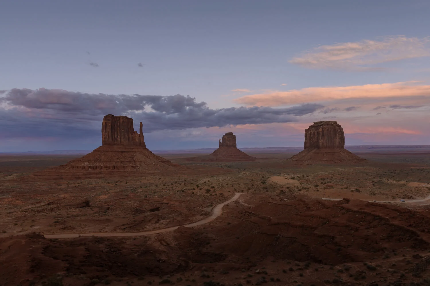
Guided Tours in Monument Valley
Rewrite We highly recommend joining a sunrise or sunset tour at Monument Valley as there are several experiences you can’t get without a guide. Here are 3 great reasons to take a tour:
1.Exclusive Sights with Back Country Tours:
- Back Country tours unveil sights inaccessible independently, such as the Ear of the Wind framed by a tree, Big Hogan Arch, a gathering spot for Navajo singing, and the elegant rock formations of Moccasin Arch and Sun’s Eye.
2. Extended Access Beyond Sunrise and Sunset:
- Optimal views aren’t accessible during sunrise and sunset hours, as the 17-mile drive and Wildcat Trail open after sunrise and close before sunset.
3. Cultural Insights from Navajo Guides:
- Led by Navajo Guides, these tours provide a unique opportunity to delve into the culture, history, and profound connection to the land held by the Navajo people.
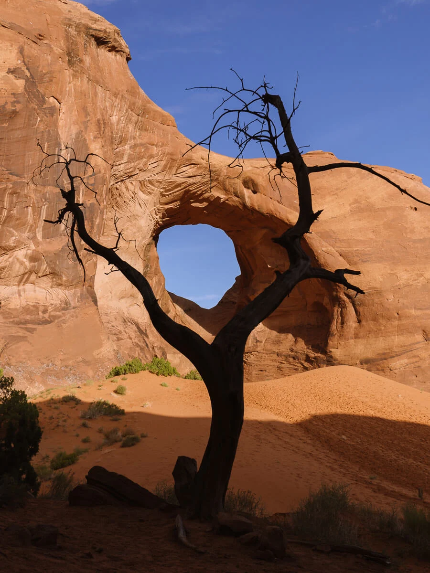
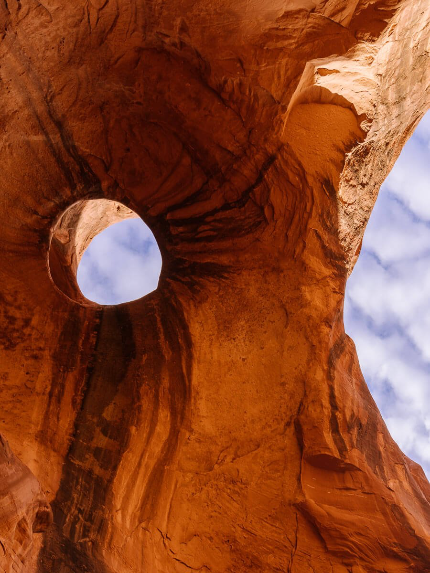
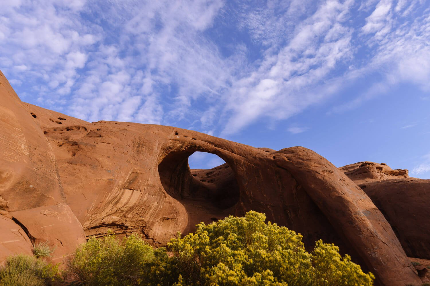
Key Tips for Your Monument Valley Excursion
Essential Tips for Your Monument Valley Tour:
- The $8 park fee is separate and needs to be paid at the park entrance.
- Due to daytime heat, wear comfortable shoes and bring sunscreen, a hat, and sunglasses.
- Mornings can be chilly, so pack something warm for the sunrise tour.
- Be mindful of the time difference; during summer, Monument Valley operates on Utah time (Arizona time + 1) to avoid missing your tour.
Exploring Monument Valley: Activities and Recommendations
Endowed with breathtaking landscapes and steeped in Navajo culture, Monument Valley offers a plethora of enriching experiences. Here are some highlights not to be missed while in the area.
- Marvel at the Vistas from The View Hotel:
- Just beyond the Monument Valley Tribal Park entrance, a sizable parking lot awaits near The View Hotel. The terrace, open to everyone, including non-guests, offers remarkable views of the valley’s mesas, buttes, and spires.
- The East and West Mittens, along with Merrick Butte, form an iconic image synonymous with Monument Valley.
- Accessibility: The tribal park’s official hours are 7:00 AM to 6:00 PM in summer and 8:00 AM to 4:00 PM in winter, but you can drive to the hotel at any time. Sunrise or sunset visits are particularly rewarding.
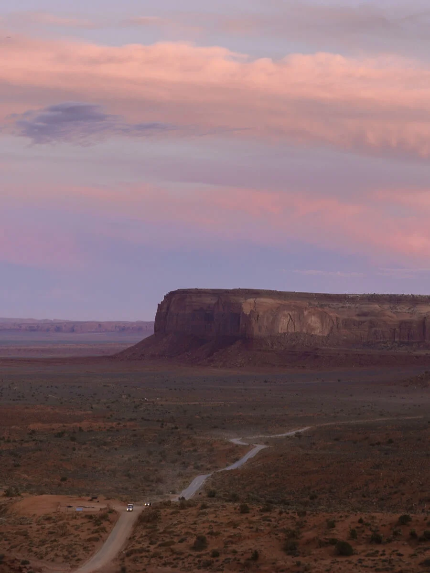
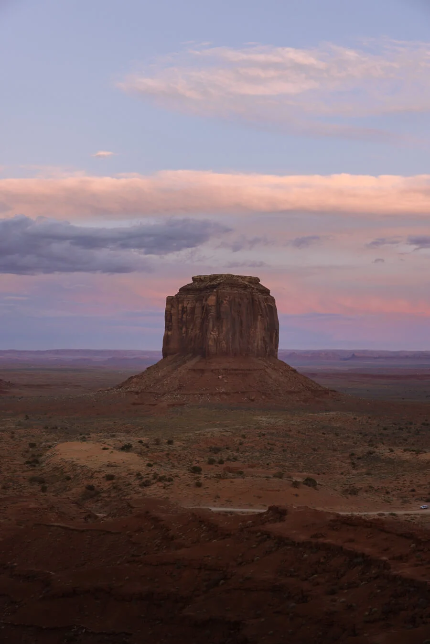
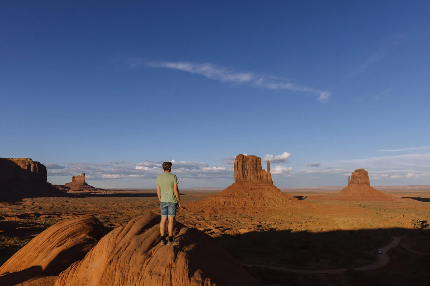
- Embark on the 17-Mile Scenic Drive:
- Immerse yourself in Monument Valley by undertaking the 17-mile Scenic Drive, the optimal way to explore the park’s most dramatic sections.
- This self-drive dirt trail is navigable in both 4×4 and 2WD vehicles, ensuring a comprehensive experience of the stunning landscapes.
Scenic Drive Details:
- Duration: Commencing near The View Hotel, the loop has a speed limit of 15 miles per hour, requiring approximately 2 to 3 hours to complete.
- Entrance Hours: Access is permitted between 7:00 AM and 5:00 PM in summer (exit by 7:00 PM) and 8:00 AM to 3:00 PM in winter (exit by 5:00 PM).
- Direction and Conditions: The circular segment of the loop must be traversed in a clockwise direction. Note that heavy rain may render the route impassable at times.
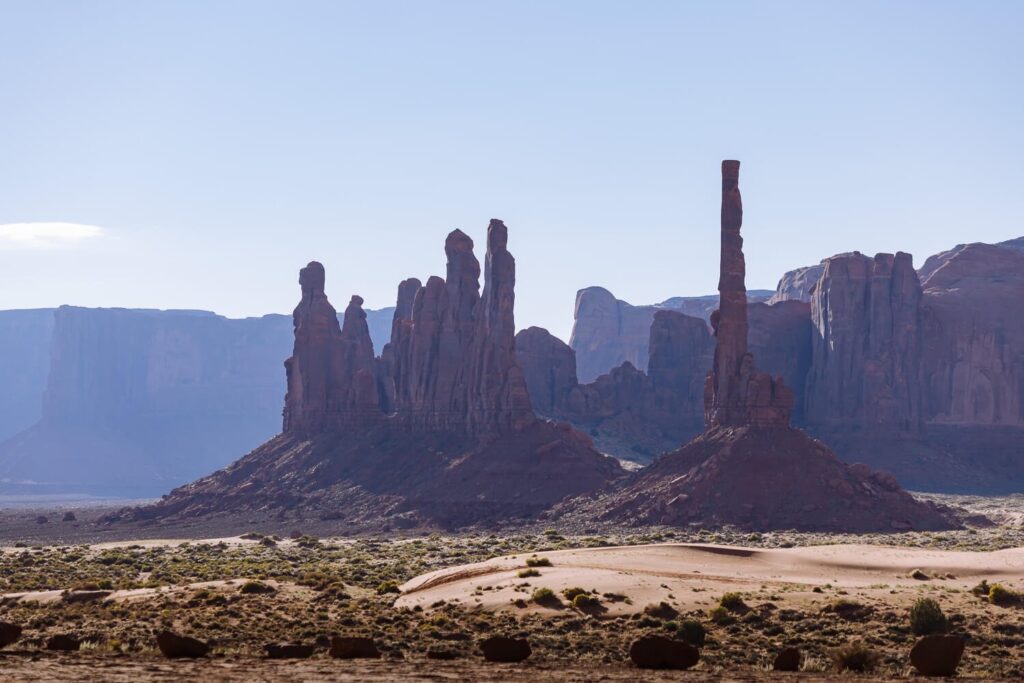

Explore Key Attractions on the Scenic Drive:
- Mittens and Merrick Butte:
- The East and West Mittens resemble hands emerging from the ground, creating an iconic sight.
- Merrick Butte earned its name from a prospector on the quest for silver in the valley.
Discover Notable Features on the Scenic Drive:
- Elephant Butte:
- Resembling a colossal elephant, this formation faces westward over the desert.
- The Three Sisters:
- Three rock spires depict a formation resembling a Catholic nun facing two pupils.
- John Ford’s Point:
- Named after the director of iconic John Wayne films like “The Searchers,” “Cheyenne Autumn,” and “Stagecoach,” this spot is perfect for capturing memorable selfies.
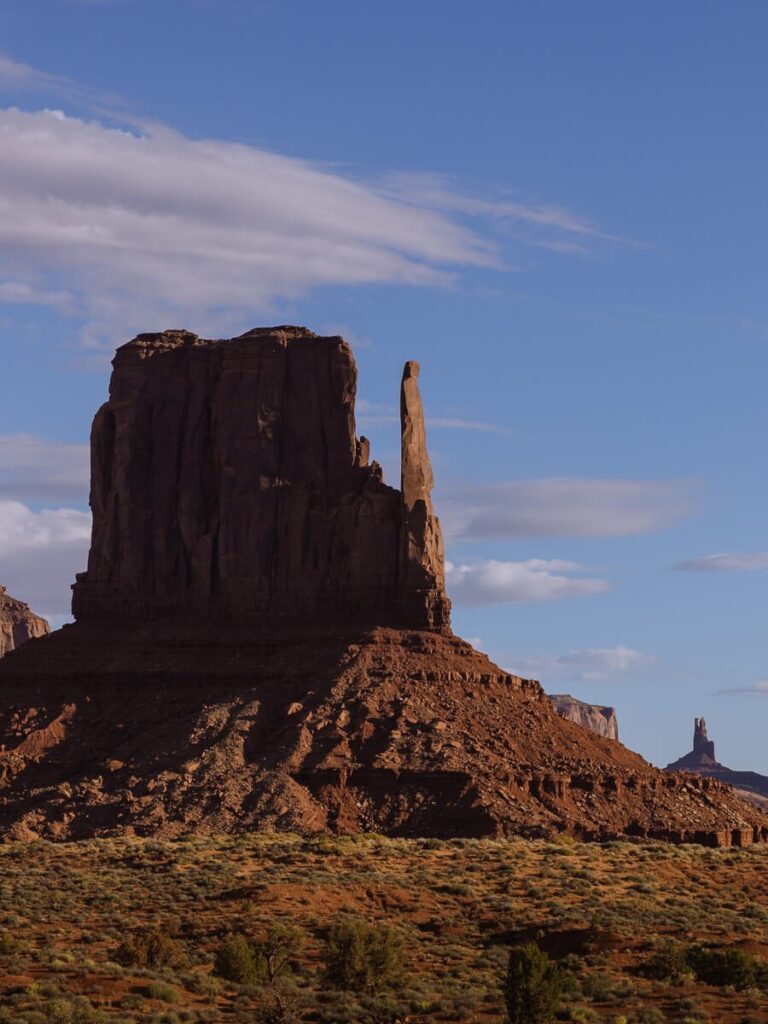
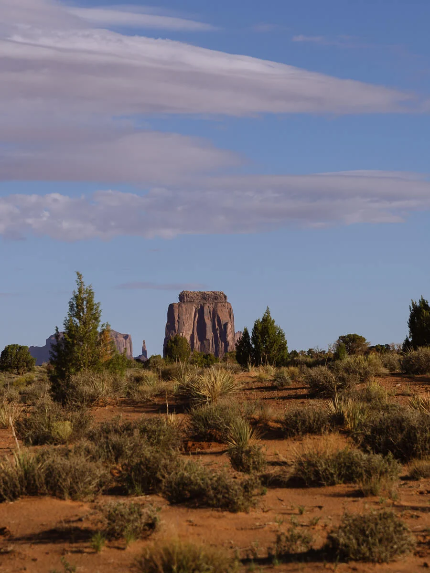
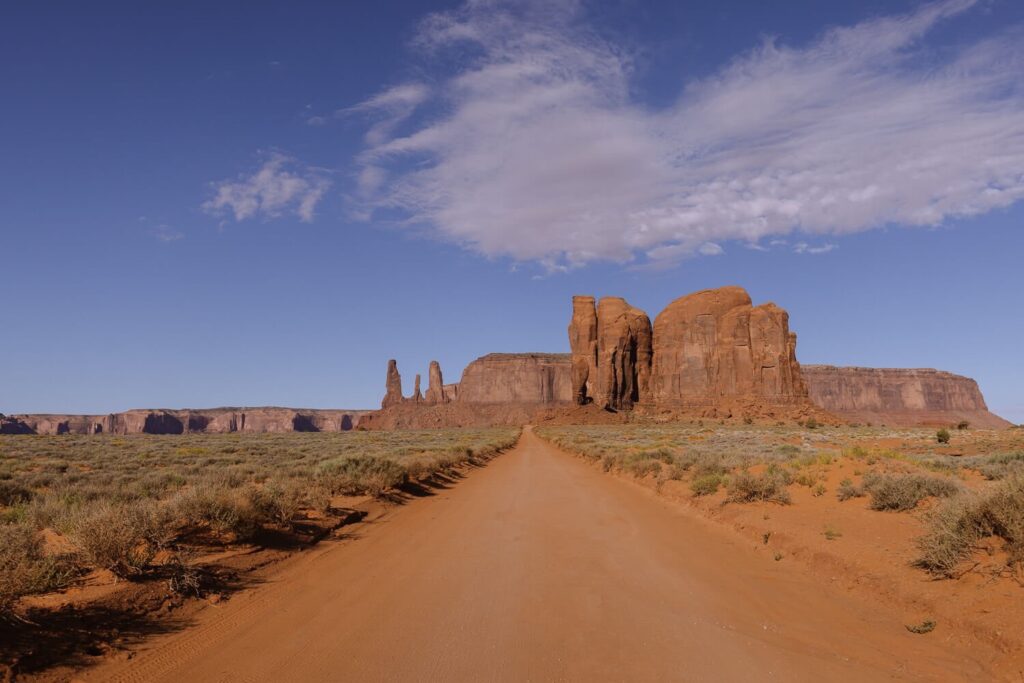
Explore Additional Stops on the Scenic Drive:
- The Hub Overlook:
- A vantage point offering scenic views of the southwestern section, featuring Wagon Wheel Butte rising above the desert and shrubs.
- Sand Springs:
- Located at the loop’s farthest point, this spot provides a distant view of the slender spire of Totem Pole. Closer exploration requires joining a tour.
- Navajo Code Talkers Outpost:
- Also referred to as Artists’ Viewpoint overlook, this offers a splendid perspective of the Mittens, Merrick Butte, and the northern part of the park.
Explore The Thumb & North Window Overlook:
- The Thumb & North Window Overlook:
- Park beside a substantial thumb-shaped spire, and if the path is accessible, embark on a brief walk to the North Window Overlook for captivating views of the Mittens and Merrick Butte.
- Embark on the Wildcat Trail Hike:
- The sole self-guided hiking option in Monument Valley Tribal Park is the Wildcat Trail. This 3.3-mile trail commences near the View Hotel, forming a circular loop around West Mitten. It provides a splendid opportunity to immerse yourself in the desert landscape and closely appreciate one of the most breathtaking buttes.
Wildcat Trail Highlights:
- The trail, winding through sandy washes and shrubbery, provides stunning views from the far side of West Mitten.
- Duration: The 3.3-mile hike typically takes around 2 hours to complete.
- Entrance Hours: Accessible between 7:00 AM and 5:00 PM in summer (concluding by 7:00 PM) and 8:00 AM to 3:00 PM in winter (concluding by 5:00 PM).
- Facilities: Limited facilities along the route, with a few canopies featuring seats for some shade. Given the summer heat, it’s advisable to avoid the warmest part of the day.
